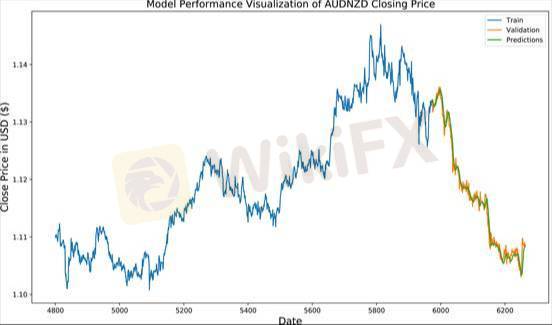
2025-04-28 12:19
IndustryMacro news sentiment scoring forlive prediction
#CurrencyPairPrediction
Macro news sentiment scoring for live Forex (FX) prediction involves employing Natural Language Processing (NLP) and machine learning techniques to automatically analyze and quantify the emotional tone expressed in real-time news articles and reports concerning macroeconomic factors. The goal is to derive a continuous sentiment score that reflects the market's perception of economic conditions and potential future trends, which can then be used to inform live FX trading decisions.
The process typically begins with the continuous collection of macroeconomic news from various sources, including financial news outlets, government reports, and economic data releases. As new articles are published, they are immediately processed using NLP techniques. This involves steps like tokenization (breaking text into words), part-of-speech tagging, and named entity recognition (identifying key economic entities like countries, currencies, and institutions).
Sentiment analysis is then performed to determine the sentiment expressed towards specific macroeconomic factors or currencies mentioned in the news. This can involve using lexicon-based approaches (relying on predefined dictionaries of positive and negative words) or more sophisticated machine learning models trained on large datasets of financial text labeled with sentiment. These models can learn to understand context and nuances in language to provide a more accurate sentiment score, ranging from strongly negative to strongly positive.
For live prediction, the sentiment scores derived from individual news articles are often aggregated over a specific time window to create a real-time sentiment indicator for relevant macroeconomic themes (e.g., inflation, employment, growth) or specific currencies. The weighting of different news sources based on their reliability or impact can also be incorporated.
This real-time sentiment score can then be used in several ways for live FX prediction. It can be directly used as a signal, with positive sentiment potentially indicating upward pressure on the associated currency and negative sentiment suggesting downward pressure. Alternatively, it can be integrated as an input feature into more complex machine learning models that also consider historical price data, technical indicators, and other macroeconomic variables. The responsiveness of sentiment to breaking news can provide an edge in capturing short-term price movements triggered by significant macroeconomic announcements or events. However, it's crucial to account for potential noise in news sentiment and to validate the predictive power of the sentiment scores through rigorous backtesting and real-time monitoring.
Like 0
rolly2843
Trader
Hot content
Industry
Event-A comment a day,Keep rewards worthy up to$27
Industry
Nigeria Event Giveaway-Win₦5000 Mobilephone Credit
Industry
Nigeria Event Giveaway-Win ₦2500 MobilePhoneCredit
Industry
South Africa Event-Come&Win 240ZAR Phone Credit
Industry
Nigeria Event-Discuss Forex&Win2500NGN PhoneCredit
Industry
[Nigeria Event]Discuss&win 2500 Naira Phone Credit
Forum category

Platform

Exhibition

Agent

Recruitment

EA

Industry

Market

Index
Macro news sentiment scoring forlive prediction
 Malaysia | 2025-04-28 12:19
Malaysia | 2025-04-28 12:19#CurrencyPairPrediction
Macro news sentiment scoring for live Forex (FX) prediction involves employing Natural Language Processing (NLP) and machine learning techniques to automatically analyze and quantify the emotional tone expressed in real-time news articles and reports concerning macroeconomic factors. The goal is to derive a continuous sentiment score that reflects the market's perception of economic conditions and potential future trends, which can then be used to inform live FX trading decisions.
The process typically begins with the continuous collection of macroeconomic news from various sources, including financial news outlets, government reports, and economic data releases. As new articles are published, they are immediately processed using NLP techniques. This involves steps like tokenization (breaking text into words), part-of-speech tagging, and named entity recognition (identifying key economic entities like countries, currencies, and institutions).
Sentiment analysis is then performed to determine the sentiment expressed towards specific macroeconomic factors or currencies mentioned in the news. This can involve using lexicon-based approaches (relying on predefined dictionaries of positive and negative words) or more sophisticated machine learning models trained on large datasets of financial text labeled with sentiment. These models can learn to understand context and nuances in language to provide a more accurate sentiment score, ranging from strongly negative to strongly positive.
For live prediction, the sentiment scores derived from individual news articles are often aggregated over a specific time window to create a real-time sentiment indicator for relevant macroeconomic themes (e.g., inflation, employment, growth) or specific currencies. The weighting of different news sources based on their reliability or impact can also be incorporated.
This real-time sentiment score can then be used in several ways for live FX prediction. It can be directly used as a signal, with positive sentiment potentially indicating upward pressure on the associated currency and negative sentiment suggesting downward pressure. Alternatively, it can be integrated as an input feature into more complex machine learning models that also consider historical price data, technical indicators, and other macroeconomic variables. The responsiveness of sentiment to breaking news can provide an edge in capturing short-term price movements triggered by significant macroeconomic announcements or events. However, it's crucial to account for potential noise in news sentiment and to validate the predictive power of the sentiment scores through rigorous backtesting and real-time monitoring.
Like 0
I want to comment, too
Submit
0Comments

There is no comment yet. Make the first one.

Submit
There is no comment yet. Make the first one.